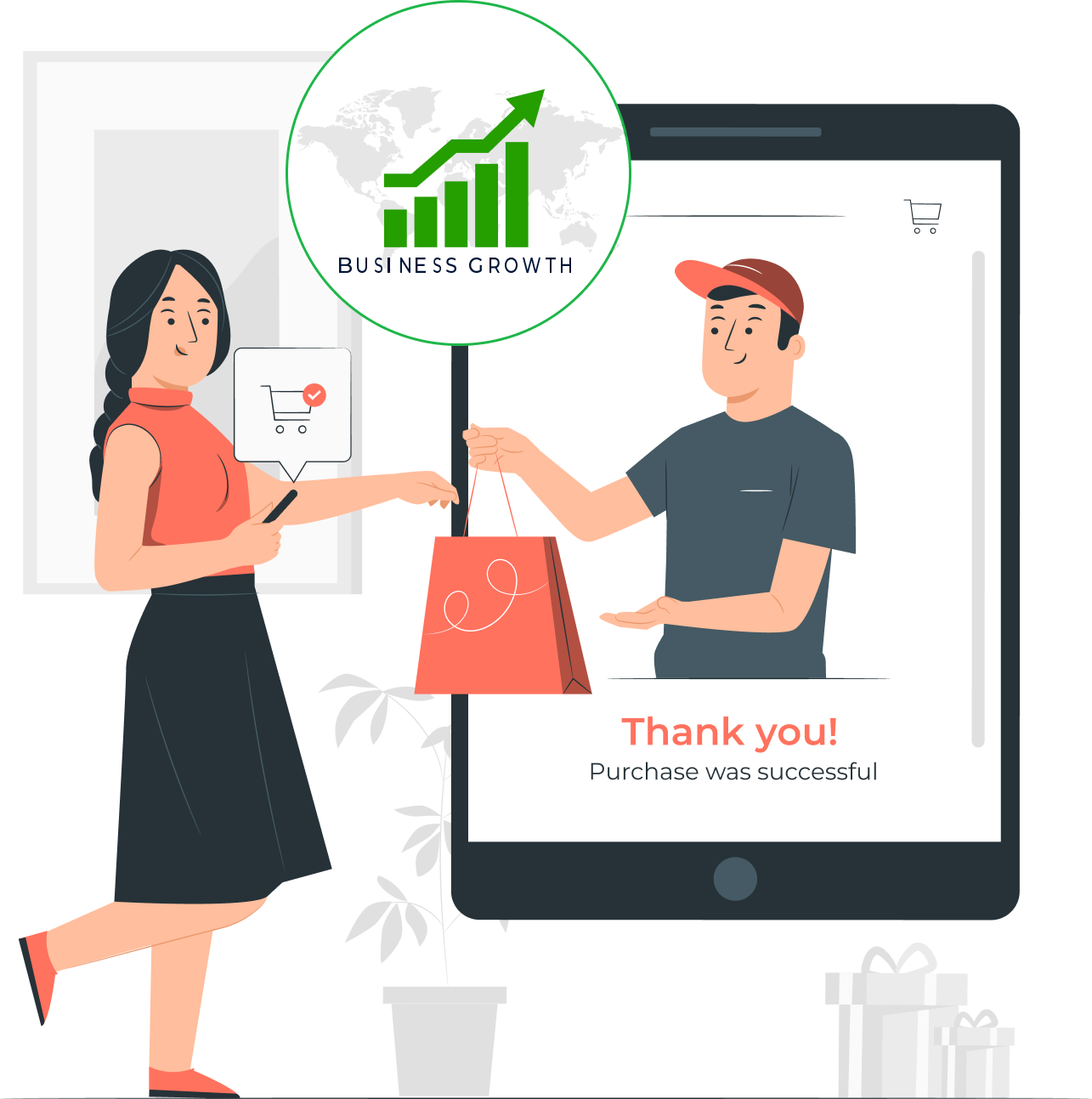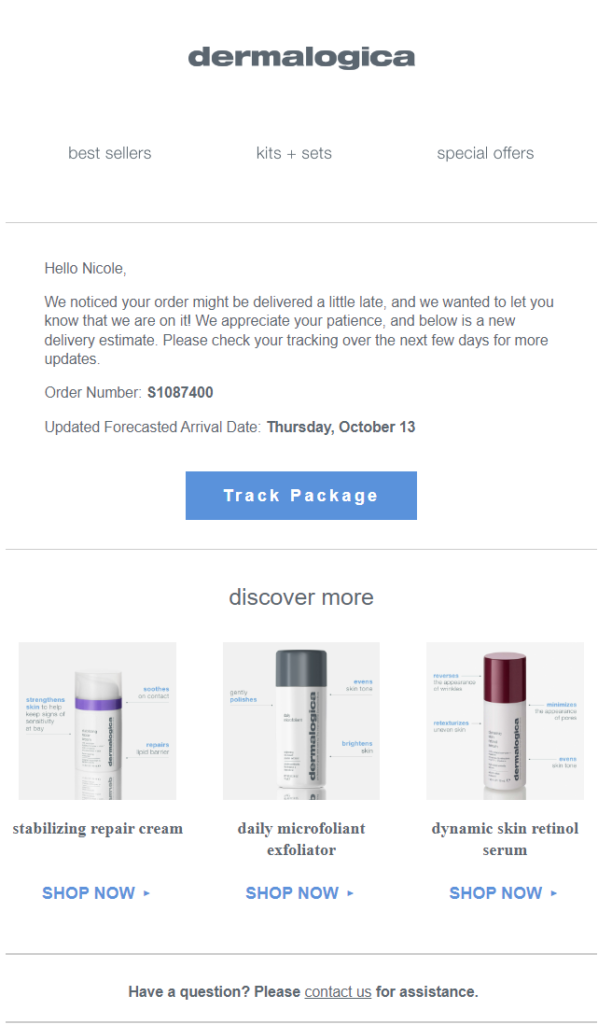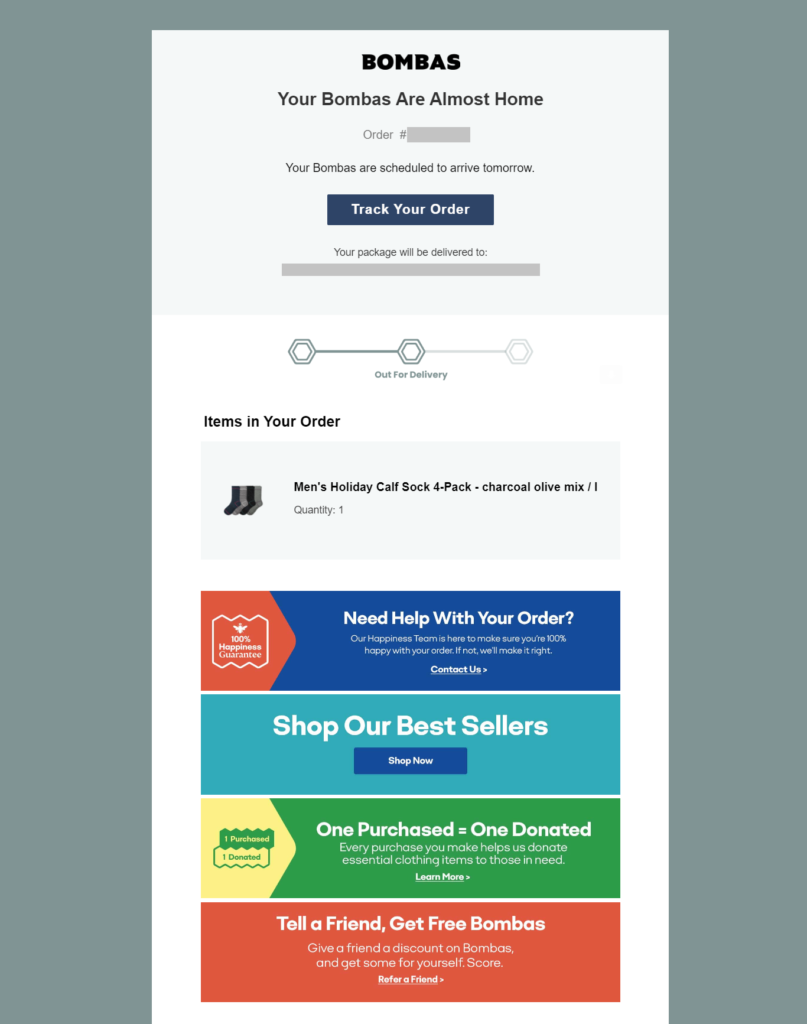May, 1 2024

How many post-purchase emails should an ecommerce retailer send? This is a question that all ecommerce operations managers grapple with. Finding the right number can have a huge impact on customer satisfaction, repeat sales, and word-of-mouth promotion. Get it wrong, and you risk annoying customers or missing out on engagement opportunities.
The answer depends on your business goals, resources, and customer base. But with the right strategy, post-purchase email campaigns can become powerful drivers of loyalty and revenue. In this post, we'll explore the benefits of post-purchase emails, ideal sending cadences, personalization best practices, and more to help ecommerce retailers develop effective approaches.
Post-purchase emails are a critical part of ecommerce marketing and customer relationship building. Sending a thoughtful and strategic series of emails after a customer makes a purchase can help build loyalty, generate repeat business, and improve the overall customer experience.
There are two main benefits of post-purchase email campaigns:
Build relationships with customers - Post-purchase emails give you a chance to continue the conversation with customers after the sale. This helps establish rapport and makes customers feel valued. Rather than disappearing after taking their money, you can show customers you care about their satisfaction, feedback, and ongoing needs. Most of our customers have seen north of 50% open rate and average of 20% click rate for all the post order emails. Much better engagement than usual marketing emails.

Increase loyalty - Well-executed post-purchase emails lead to higher customer retention and loyalty. As seen by our customers When you provide helpful information, personalized recommendations, and special offers after a purchase, customers gain more reasons to stick with your brand long-term. This also increases their lifetime value. For example our client Gorjana includes a Jewelry care guide in their Order delivered email, which helps them in connecting with customers beyond the purchase and helps in creating loyalty.
In summary, post-purchase emails are a low-cost, high-impact way to nurture your customer relationships beyond the initial sale. Thoughtful follow-up and engagement after the transaction can boost satisfaction and motivate repeat purchases.
Post-purchase emails provide several key benefits for ecommerce retailers:
Upsell/Cross-Sell Opportunities
One of the biggest benefits of post-purchase emails is the ability to upsell or cross-sell to customers. After someone makes a purchase, they are much more likely to consider buying additional products. Post-purchase emails allow you to showcase related or complementary products that the customer may be interested in. For example, if someone buys a camera, you could promote lenses, camera bags, memory cards, and other accessories in follow-up emails. This provides a natural opportunity to increase average order value. Our Client Gorjana has reported almost $70,000 revenue on a monthly basis from Post order notifications during holidays.
Our another client White Orange uses shipping confirmation email to showcase their skin care range, which helps them upsell.


Reviews
Post-purchase emails also provide an avenue for requesting reviews. Product reviews are extremely valuable for ecommerce businesses. By including a friendly ask for a review in post-purchase emails, along with a link that makes leaving a review easy, retailers can generate more user-generated content. This helps build social proof and trust for the business. Reviews also provide helpful feedback for improving products and services.
Repeat Business
In addition to immediate upsells, post-purchase emails lay the foundation for repeat business. By staying top of mind with customers after they buy, retailers can encourage future purchases. Post-purchase emails demonstrate that you value customers beyond just the initial sale. This improves brand perception and makes it more likely that customers will think of your brand first when they have additional needs down the road. Post-purchase communication shows you care about providing ongoing value, not just making a quick sale. Like in the example below our client Nomatic is using order delivery notification for upselling.
Post-purchase emails serve different purposes and can be categorized into several types:
- Receipt Email - This is the most basic post-purchase email that provides the customer with a receipt and order confirmation. It should include details like order number, items purchased, prices, shipping and billing address, payment information, and estimated delivery date.
- Shipping Confirmation - Once the order has shipped, send an email confirming the shipment and providing the tracking number and link. This keeps the customer informed on the status.
- Review Request - Asking customers to leave a review of their purchase experience is a great way to generate user-generated content. The email should include a link directing them to leave a review.
- Upsell Recommendations - Using data and analytics, you can target customers with related or complementary products they may be interested in. The email displays personalized suggestions.
- Education and Tips - For certain products, provide tips, guides or tutorials to help customers fully utilize or get the most value from their purchase.
- Re-engagement - Win back customers who haven't made a repeat purchase after a set period of time. Provide an incentive to re-engage them.
Some examples of our clients Post Purchase Emails, which has been customized as per client’s requirements


Experts generally recommend sending 2-4 post-purchase emails to maximize open and clickthrough rates while avoiding fatigue. Sending too many emails can overwhelm customers and lead to lower engagement over time.
According to a study by Experian, the ideal number is 3 automated emails - a welcome email immediately after purchase, a review request 2 weeks later, and a follow-up email 4 weeks after purchase. This achieved a 22% increase in repeat purchase rate compared to just 1 post-purchase email. Our clients have reported similar and sometimes even better results.
Retailers like Amazon typically send 3-4 emails - a confirmation email, shipping notification, review request, and sometimes a follow-up promotion.
HubSpot recommends starting with 3 emails in the first 2 weeks, then sending promotional or re-engagement emails every 2-4 weeks after that. The most important emails are immediately after purchase, 2 weeks later, and 90 days later. Overall the consensus is that 3-4 emails in the first month tends to convert the best. But this can vary by industry and customer preferences. Extensive testing and optimization is key to find the ideal number for each unique business. The main factors are maximizing open rates while avoiding fatigue and unsubscribes.

Determining the ideal timing of your post-purchase emails is crucial for driving engagement and maximizing their impact. Here are some best practices on when to send the different types of post-purchase emails:
The order confirmation email should be sent immediately after a customer completes their purchase. This helps confirm the transaction was successful and provides key details like the order number, items purchased, shipping and billing information.
Once an order has shipped, send the shipping confirmation email. This notifies the customer their order is on its way and provides tracking information so they can follow its progress. Send this within a few hours of the order shipping.
Review request emails should go out a few days after delivery, when the customer has had time to try out the product. Aim to send this 3-10 days post-delivery. The timing increases the response rate.
Surveys are best sent 2-3 weeks after delivery. This allows enough time for the customer to evaluate the product and overall experience. But it's still recent enough to provide useful feedback.
If a customer adds items to their cart but doesn't complete checkout, send the cart abandonment email within 1-3 days. Quick follow-up can recover many abandoned carts while the customer still remembers their intent.
For re-engagement emails, the timing depends on your goals. Promotional offers may go out 1-2 weeks post-purchase. Educational content can wait a month or more. Test different timings to see what works best.
Optimizing the timing of your post-purchase emails ensures each one reaches customers at the moment they are most receptive and likely to convert. Test variations to pinpoint the ideal sending cadence.
Personalization is a key component of effective post-purchase email marketing. Sending generic, one-size-fits-all emails is unlikely to engage customers or drive results. However, personalizing post-purchase emails can significantly increase open rates, click-through rates, and conversion rates.
There are a few key ways to personalize post-purchase emails:
Use the customer's name - Simply addressing the customer by name makes the email feel more customized and human.
Reference their purchase - Mention the specific product the customer bought or use a dynamic field to display the item image. This reminds them of their purchase and makes the message relevant.
Segment based on customer attributes - Send targeted emails based on customer data like purchase history, interests, demographics, etc. Match the email content to their attributes.
Trigger emails based on actions - Set up a series of emails triggered by events like first purchase, repeat purchase, abandoned cart, product review, etc.
Recommend relevant products - Use the customer's purchase and site behavior to recommend complementary or related products they may be interested in.
Localize the message - Customize messaging, offers, and product recommendations based on the customer's location.
Personalize subject lines - Make each subject line relevant by referencing the customer's name, order details, or past purchases.
The more targeted and customized your post-purchase emails are, the better the results will be. The goal is to make each customer feel like you're speaking directly to them.
A/B testing is crucial for optimizing your post-purchase email strategy. You should regularly test different email elements to see what resonates best with your customers.
Some key things to A/B test include:
Email subject lines - Try different wording, emojis, urgency, etc. Track open rates.
Timing - Send some emails immediately after purchase, some a few days later. See if timing impacts open/click rates.
Personalization - Test personalized vs. batch emails. Personalize product images, names, etc.
Content - Swap sections, add/remove content. Does more/less copy perform better?
Calls-to-action (CTAs) - Test different CTAs for the desired action. Track CTA click-through rates.
Email copy - Try different tones, voices, content formatting. Assess engagement.
Day/time - Determine if certain days/times lead to higher open rates.
Frequency - Test sending more or fewer emails. At what point do customers disengage?
Continuously review email analytics and run A/B tests. Optimize based on data insights to improve email engagement over time. Testing allows you to refine your approach and maximize the impact of post-purchase emails.
Sending too many emails or irrelevant content are common mistakes that ecommerce retailers make with post-purchase emails. It's important to avoid these pitfalls:
Bombarding customers with too many emails after a purchase can lead to fatigue and irritation. While you want to nurture the customer relationship, overcommunication will likely have the opposite effect. Limit post-purchase emails to no more than 3-5 touch points spaced out over a couple weeks. Any more than that risks the customer tuning out.
Post-purchase emails need to provide value to the customer by being helpful, informative, or offering incentives. Sending random product promotions or content that has nothing to do with their purchase will only annoy customers. Make sure your emails directly relate to their order and interests. For example, send tips on how to use the product, recommendations for complementary items, or a coupon for their next purchase based on their buying history. Relevance is key.
In conclusion, post-purchase emails are a critical part of any ecommerce retailer's customer engagement and retention strategy. Sending a series of thoughtful, personalized emails after a purchase can increase customer satisfaction, build loyalty, generate repeat sales, and reduce returns.
The ideal number of post-purchase emails to send will vary based on your business and customers, but 3-5 touchpoints spaced out between order placement to delivery is a good starting point for most retailers. Focus on providing value to the customer at each stage through order confirmations, shipping updates, satisfaction surveys, warranties, incentives for future purchases, and more.
Always test different email copy, timing, and frequency to determine what resonates best with your audience. Avoid over saturating customers, and ensure you are segmenting and personalizing messages. With a strategic post-purchase email strategy, you can delight customers, improve retention, and grow your ecommerce business.
The key is to start sending post-purchase emails, continue refining your approach, and make it an integral part of your customer relationship management. Don't miss out on this opportunity to engage customers after the sale - it will pay dividends for your ecommerce operations.
No matter what strategy you choose, Fenix can help you execute it. We give the flexibility to design your emails according to your business goals and can add relevant digital assets and CTAs . Which helps you in using branded post purchase emails as another tool in your marketing arsenal and garner extra revenue and improve conversion rate. We support both SMS and email notifications and some of the platforms we support are Klaviyo, Twilio, Attentive, Iterable, Braze and Sendlane.

Author: Akhilesh Srivastava
Founder and CEO of FenixCommerce
